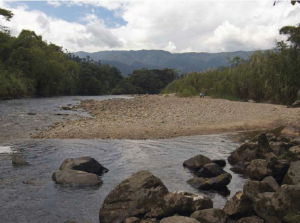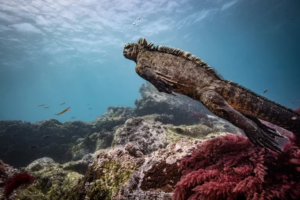The Galapagos Shark: A Majestic Marvel of the Seas
The Galapagos shark, with its awe-inspiring size and remarkable strength, is a captivating creature that never fails to leave a lasting impression. This inquisitive species exhibits a curiosity that sets it apart, often approaching divers and boats, creating unforgettable encounters. While it is generally not a threat to humans, it’s important to note that when it senses danger, it can exhibit sudden movements, which serve as an immediate warning to those who may be at a considerable distance.
Beyond the Archipelago: The Global Presence of the Galapagos Shark
Contrary to its name, the Galapagos shark inhabits not only the Galapagos Archipelago but also tropical waters across the globe. Its name, however, originated from its initial identification in the Galapagos back in 1905. This resilient species is known for its strength and agility, capable of traversing the open seas and journeying between islands either alone or in groups. While some have spotted Galapagos sharks within a mere 50 kilometres from land, younger individuals seldom venture beyond 25 metres. In terms of depth, adult sharks have been recorded diving to impressive depths of up to 180 metres.
A Colossal Cartilaginous Wonder: Exploring the Galapagos Shark’s Features
Out of the approximately 400 shark species documented, the Galapagos shark stands as a notable representative of large cartilaginous fish. It boasts a maximum length of 3.7 metres and a lifespan ranging from 20 to 25 years. Moreover, the heaviest recorded individual weighed a staggering 85.5 kilograms. These statistics testify to the awe-inspiring nature of this magnificent creature.
A Tapestry of Shark Species: The Galapagos Shark’s Fascinating Companions
Galapagos sharks thrive in the shallow waters surrounding the Galapagos Islands and are also known to inhabit temperate oceanic and coastal waters. Within the Galapagos Archipelago, several shark species coexist in harmony, with the Galapagos, hammerhead, blacktip, and whitetip sharks taking centre stage and accounting for 83% of the identified shark population. These species share similar habitats, which explains their tendency to gather in close proximity to one another.
Diving into the Galapagos Shark’s Physical Attributes
Galapagos sharks possess an extraordinary sensitivity to vibration and electrical conductivity, allowing them to navigate their surroundings with precision. Their streamlined, torpedo-shaped bodies contribute to their impressive agility. The Galapagos shark boasts a rounded nose and broad, rounded snout, while its round, medium-sized eyes add to its distinctive appearance. Its mouth is lined with 14 rows of teeth on each side of both jaws. It features strong, triangular upper teeth and narrower lower teeth, all of which possess serrated edges. Additionally, they display two dorsal fins, with the first fin positioned high and sickle-shaped, aligned with the pectoral fin, while the second fin emerges slightly beyond the height of the anal fin. The pectoral fins of the Galapagos shark are large and pointed, contributing to their impressive manoeuvrability.
The Galapagos shark exhibits a distinct coloration pattern, with its upper body presenting shades of brownish grey or brown, while the lower body tends to be white or light in colour. Eye-catching white stripes adorn their sides, further enhancing their captivating appearance.
Exploring the Galapagos Shark’s Feeding Habits
Within the Galapagos Archipelago, the Galapagos shark assumes a significant role as a top predator, contributing to the delicate balance of this unique ecosystem. With its predatory prowess, it feeds on a diverse array of marine creatures. From smaller fish and cephalopods to rays and even sea lions, the its diet showcases its versatility and adaptability as a formidable hunter. Its presence not only shapes the dynamics of marine life but also underscores the importance of conservation efforts to safeguard the archipelago’s natural heritage.
Conservation Challenges and Efforts
While the Galapagos shark continues to inspire awe and admiration, it faces numerous challenges that threaten its existence. Overfishing, habitat degradation, and climate change pose significant risks to these magnificent creatures. Recognising the importance of preserving their habitats and implementing sustainable fishing practices is crucial to securing a future for the Galapagos shark and the countless other species that rely on these fragile ecosystems.
Thankfully, numerous conservation initiatives are underway to protect and conserve the Galapagos shark. Collaborative efforts between local authorities, scientists, and environmental organisations aim to establish protected marine areas, enforce fishing regulations, and raise awareness about the importance of conserving these iconic creatures. By championing these initiatives, we can safeguard the Galapagos shark for future generations to marvel at and cherish.





